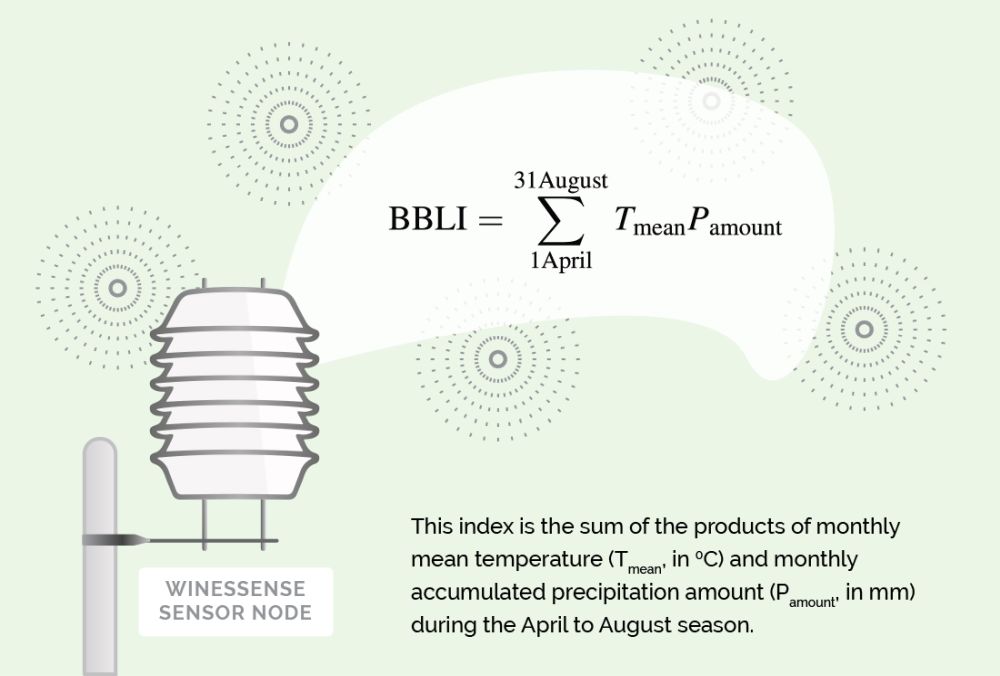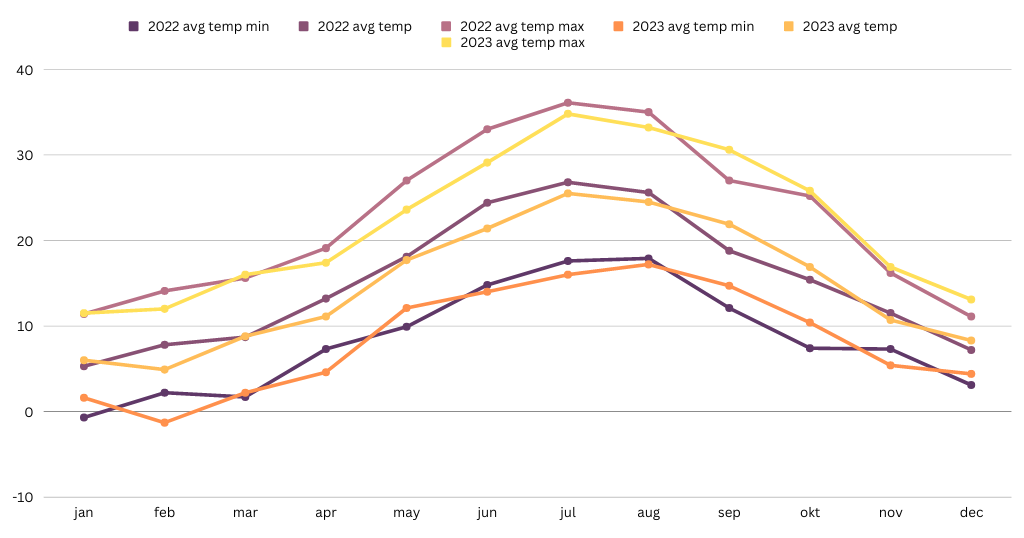How complex bioclimatic indices, like BBLI, can help us understand how challenging winegrowing is, and will become in the future.
Leading European regions in the wine industry are and have always been the Iberian peninsula, France and Italy. Northern regions of Europe have been growing grapes yet with limited success due to climatic factors. Still, as a consequence of a forecasted global temperature increase in the next 50 years, some regions will widen their winegrowing potential, while the others will actually lose the best conditions for growing grapes. Therefore, if we embrace simulated climatological models, we could, with an ease, detect those areas that would suffer from cold or warm bias.
Winegrowers have been relying on different indices to track and manage the conditions in their vineyards. The most widely used ones being the Winkler index (WI) and the Huglin index (HI). Both are primarily focused on thermal parameters and heat accumulation during the growing season, from April to September. But to understand the magnitude of the upcoming changes, we need to shift our focus to another index: the hydrothermal index of Branas, Bernon and Levadoux, or BBLI, which makes use of both thermal and humidity/precipitation aspects in vineyards. The scientific definition of the index is as shown in the formula below.

In essence, BBLI is indirectly associated with a potential of a specific location for producing a certain quality of grapes, as it indicates moisture sufficiency or deficit. At the same time it carries high importance for pest and disease predictions, since moisture surpluses and higher temperatures are generally convenient for a rapid spread of fungal and bacterial diseases.
Measurement results obtained in the region of interest, will reveal different values within a single area, subject to local specifics. For the two sites in topological proximity, yet separated by a hill, the BBLI will provide sharp gradient values, due to spatial distribution of precipitation. Thus, a unique feature of BBLI to factor precipitation into the equation becomes genuinely handy.

Winegrowing is known for its sensitivity and vulnerability to weather conditions, which indicates that most of the details in vineyards require close attention and tracking. It is only rational to use technology as means to accomplish this. Smart sensors that can acquire this data are a part of our Winessense platform, and can simplify all the aspects related with such a challenge.
Our sensor nodes can be used to determine areas and microsites of potential risk, all subject to climatic factors, and at the same time enable predictive modeling as a strategy to deal with potential problems. Winessense sensor network and vineyard management software tracks microclimate of each plot in a vineyard and feeds a users phone with accurate forecasts and alerts for grape diseases. Thanks to the new smart viticulture technology, anyone can always track conditions on every part of a vineyard in real-time.

In our next blog post we will look up at the actual BBLI values for a certain region, as well as the historic changes of this index for this area within the past decade.



